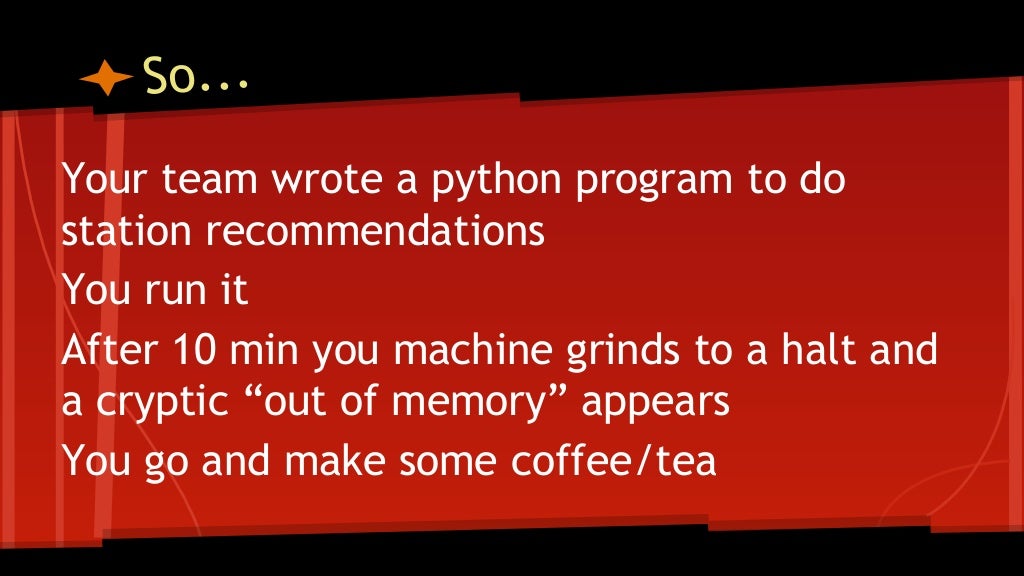

- Python free memory install#
- Python free memory full#
- Python free memory code#
- Python free memory windows#
"Hyperlink is clearly a problem.", I assumed. This is when I saw that the number of Hyperlink objects had dramatically increased by more than 500. So I resumed the execution of my program by clicking on the Resume Program button.Ī few minutes later, I paused the program once again and displayed the most common object types in memory 7. > objgraph.show_most_common_types(limit=50) However, I couldn't draw any outright conclusion, as I didn't know how the number of such instances had increased over time.
Python free memory code#
I saw that two of these object types were from my own code (i.e. In the Python prompt, I used objgraph to display the most common object types in memory.

Python free memory install#
I installed objgraph: (env) G:\crawler>pip install objgraphĭownloading objgraph-3.0.1.tar.gz (628kB)ġ00% |#| 634kB 441kB/sīuilding wheels for collected packages: objgraph In a new command prompt, I activated my Python virtual environment 5. It also allows you to draw object reference graphs! Awesome! This is why I turned to objgraph, a very cool Python library capable of enumerating all objects allocated by a Python process. The more Python objects you create and keep alive, the more memory you consume. Visualizing allocated objects using Python Object Graphs (objgraph) So I had to dig deeper, as this was typical of memory leaks. The overall trend was an increase in allocated memory over time.

I clearly needed a more reliable way to validate this. But just a few seconds later, I realized that it was slowly increasing.Ī bunch of questions immediately came to my mind: The memory use of the Python process seemed to be under control.
Python free memory windows#
So after a few minutes of crawling, the just-enough-paranoid programmer in me took a quick glance at the Windows Task Manager 1.
Python free memory full#
Here follows the full story of how I tracked down a memory leak in my Python application. Had I introduced a new bug? If so, where was it? As I hadn't changed any significant portion of my code, this made no sense at all. The memory use of my crawler was slowly, but steadily increasing. "I thought that memory leaks were impossible in Python?", I said to myself, staring incredulously at my screen. Menu Tracking Down a Freaky Python Memory Leak 06 December 2016 on memory leak, perfmon, windows, lxml, objgraph, vmmap, umdh, pycharm, python


 0 kommentar(er)
0 kommentar(er)
